Sigma S 70-200 mm f/2.8 DG DN OS
3. Build quality and image stabilization
When you compare optical constructions of all these instruments you can draw very interesting conclusions. In case of the new Sigma you get 20 elements positioned in 15 groups. There are as many as 6 FLD elements (with characteristics close to those of fluorite), 2 SLD (low dispersion) and 3 aspherical elements.
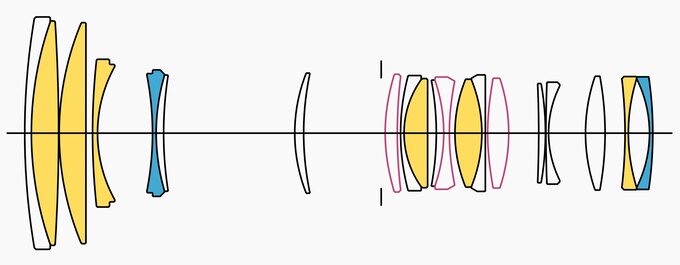 |
Please Support UsIf you enjoy our reviews and articles, and you want us to continue our work please, support our website by donating through PayPal. The funds are going to be used for paying our editorial team, renting servers, and equipping our testing studio; only that way we will be able to continue providing you interesting content for free. |
- - - - - - - - - - - - - - - - - - - - - - - - - - - - - - - - - - - - - - - - - - - - - - - -
The optical system of the new Sigma is significantly simpler than that of its predecessor – obviously the producers tried their best to limit the final weight of their instrument. The older lens could reach even 1.8 kg after all. I admit the task was very difficult indeed because at the same time they significantly decreased minimum focusing distance and such a move demands an even lager range of element system inside the closed tube. As if it wasn't enough, contemporary constructions try to optimize their video registering performance so they have to tackle also focus breathing, a problem that was virtually non-existent in reflex camera 70-200 mm lenses. Previously, even huge focus breathing was tolerated because why not?
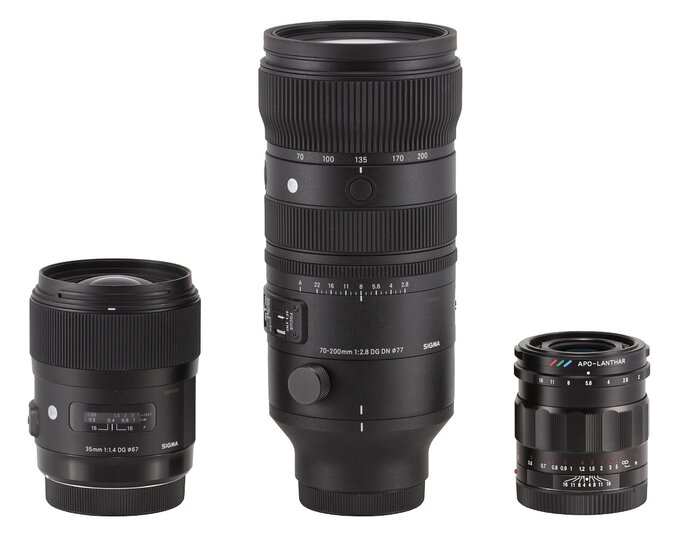 |
When it comes to the aperture, the one of the Sigma S 70-200 mm f/2.8 DG DN OS features just 11 blades and can be closed down to a value of f/22 at the maximum. In this area only the Sony can compete with the Sigma successfully; other lenses of this class feature apertures with just 9 blades.
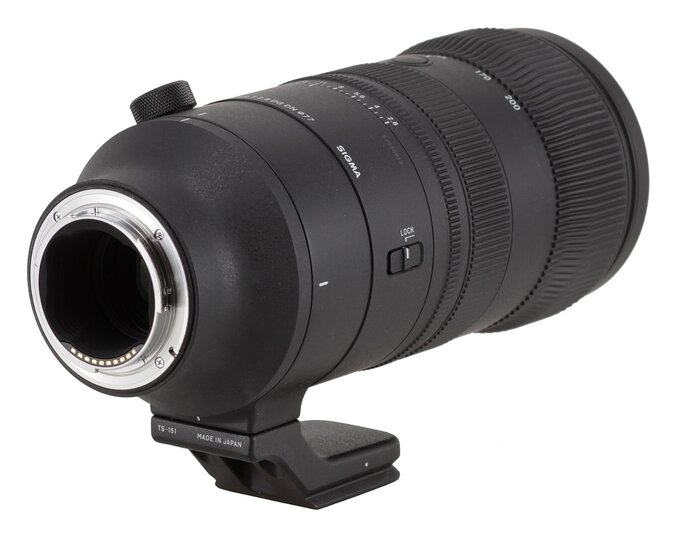 |
The proper tube of the lens is made of metal; it starts with a smooth ring that quickly increases its diameter. It features a white dot, making an alignment with a camera easier, 023 marking the production year of the instrument, an inscription 'MADE IN JAPAN', and minimum focusing distance for both extremes of the focal length range: 0.65–1.0M/2.13–3.28FEET.
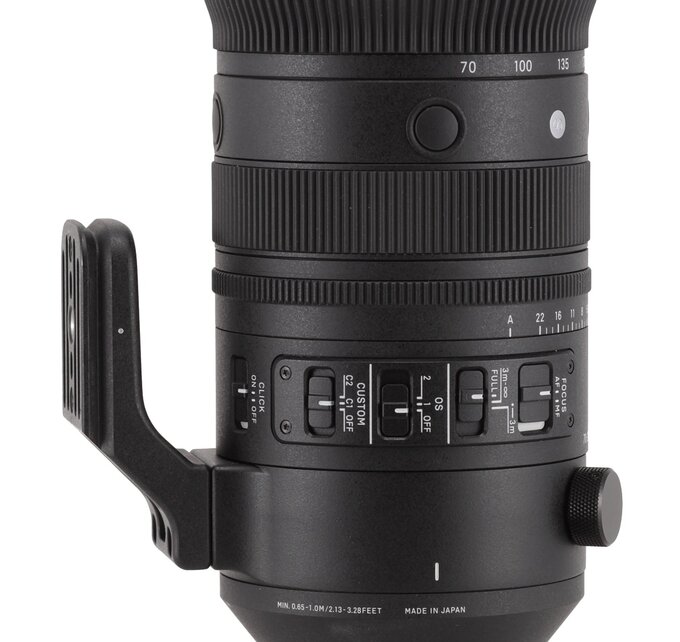 |
Further on, you find a part of the tube with an inscription stating the name of the company and parameters of the lens along with a whole array of switches. The first of them, FOCUS, is used to control the focusing mechanism, with two possible positions: AF and MF. The next switch limits the autofocus range, with three possible ranges: FULL, from 3 meters to infinity and from the minimum focusing distance to 3 meters. Then you get an OS switch, controlling the optical stabilization unit (with 1, 2, and OFF modes) and as the last one, a switch labelled CUSTOM, which allows you to choose between three positions: OFF, C1 and C2. It is used to operate specific focusing mechanism modes, saved by the user after calibrating the lens by the Sigma USB Dock.
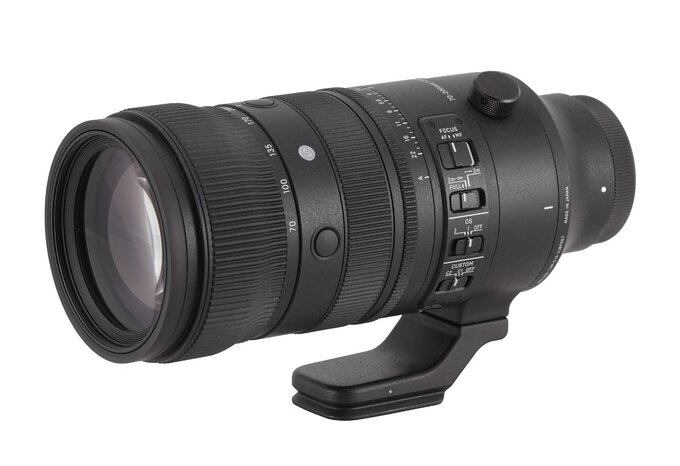 |
The next part is an aperture ring we've mentioned earlier, 13 mm wide, half of its surface covered by ribs in order to make your grip more secure. It includes aperture markings from f/2.8 to f/22 and an A position as well. The ring can be de-clicked or it can move every 1/3 EV interval.
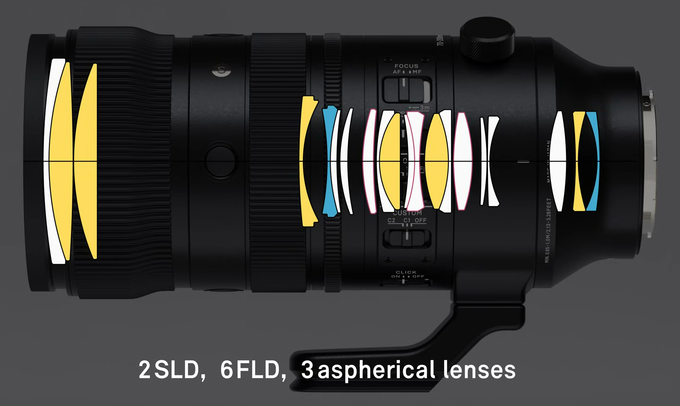 |
Further on you find an immobile part of the casing with an S mark, meaning the lens belongs to the 'Sport' series, and three round FOCUS LOCK buttons that are also programmable.
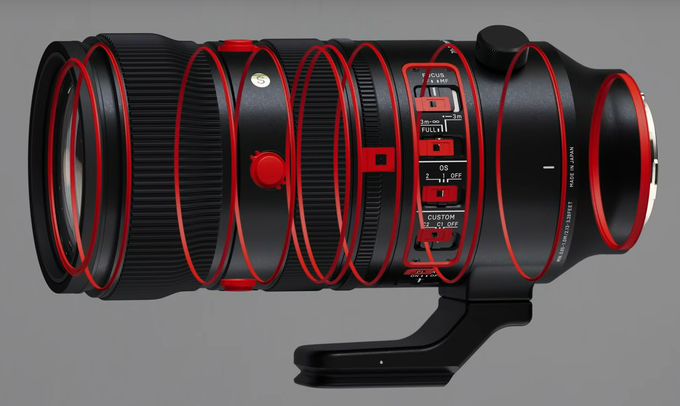 |
The Sigma S 70-200 mm f/2.8 ends with a rubber edge, inside which you find a non-rotating filter thread, 77 mm in diameter. The front element, 67 mm in diameter, doesn't move and is relatively flat.
Buyers get both caps, a hard case, and a hood in the box with the lens.
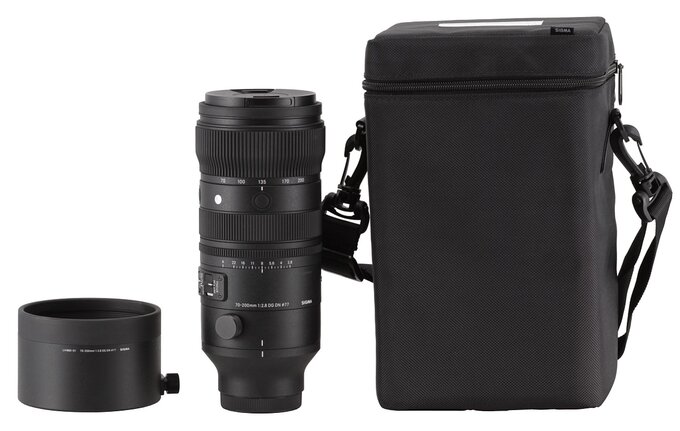 |
Optical stabilization
The official press release of the producer features a piece of information that optical stabilization of the lens can be as efficient as even 7.5 EV at the 70 mm focal length, and reaches 5.5 EV at 200 mm.In order to check the real efficiency of the Sigma's stabilization unit at 200 mm we took several dozen of photos at every exposure time ranging from 1/250 to 1/2.5 of a second with the stabilization switched on and off. The graph below shows the percentage of blurred photos depending on the exposure time expressed in EV with 0 EV being an equivalent of 1/200 of a second.
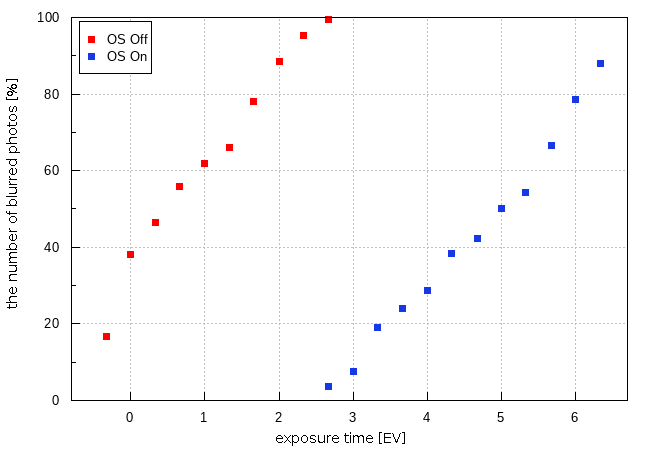
The maximum distance between both curves reaches 4.6-4.7 EV and such is, according to our measurements, the efficiency of stabilization unit of the Sigma S 70-200 mm f/2.8 DG DN OS. It's a bit short of the declared 5.5 EV. On the other hand, a result even approaching 5 EV is excellent nevertheless and we assess the performance of the stabilization mechanism very high indeed. The Sigma fares noticeably better in this category than the Tamron 70-180 mm G2 and even a bit better than the much more expensive Sony FE 70-200 mm f/2.8 GM OSS II.






